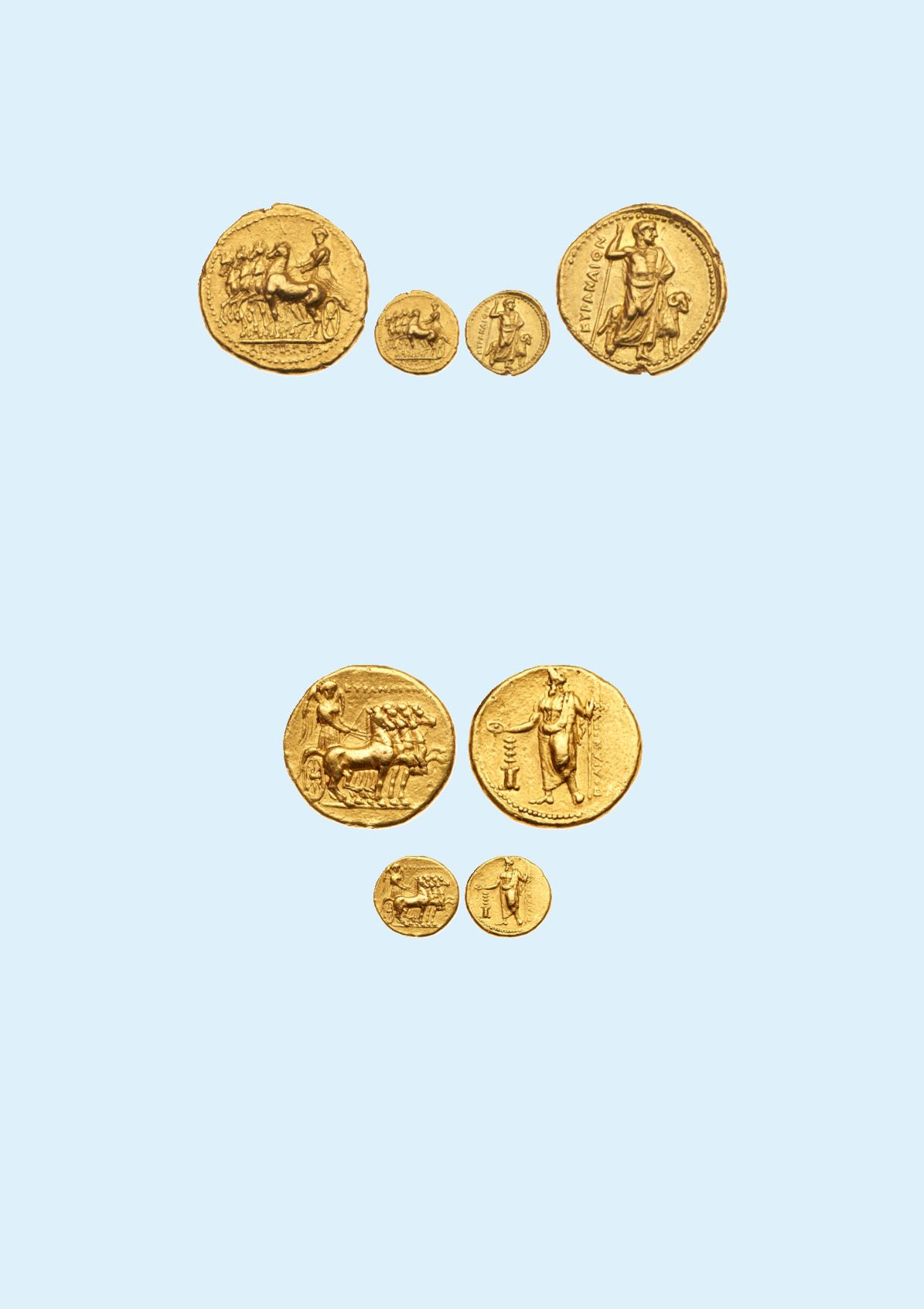

Wonderful Kyrene Gold Stater - AMasterpiece of Numismatic Art
411
Kyrenaika, Kyrene. c. 331-322 BC, Gold Stater (8.67 g.).
Magistrate Aristagoras.
Charioteer, holding a ken-
tron and the reins, driving a slow quadriga, seen in three-quarter perspective, left, API
S
TA
G
OPA
S
in
exergue.
rev.
KYPANAI
W
N, Zeus-Ammon standing, facing three-quarters to right, holding a sceptre and
resting his left hand on his hip; in the background, at his feet, a ram standing right, 8.68g., 7h (Naville 73e
(this coin); BMC 106 (these dies); SNG Copenhagen -; Boston 1319 (these dies)). A very rare issue, with
a fantastic old pedigree stretching back to the late nineteenth century. Beautifully composed types seen in
perspective, a superb example of numismatic art. Choice Very Fine.
$65,000
Ex Viscount Gustave Ponton d’Amécourt Collection, Hoffman, 28 April 1886, lot 151
Ex Rollin & Feuardent, 9 May 1910, lot 690 Ex Naville V, 18 June 1923, lot 2945
Ex Lucien Naville Collection Ex Sotheby’s, 5 July 1985, lot 88
Ex Dr. Lawrence A. Adams Collection, Triton XIX, 5 January 2016, lot 2111.
412
Cyrenaica, Cyrene. Ophellas, Ptolemaic Governor. Gold Stater (8.61 g), first reign, ca. 322-313 BC. Po-
lianthes, magistrate. KYPANAION, Nike, holding kentron and reins, driving slow quadriga right. Rev.
POLIANQEUS
, Zeus-Ammon standing facing, head left, holding patera and lotus-tipped scepter; in left
field, thymiaterion. Naville 104; SNG Copenhagen 1210 Pozzi 3271. Very Fine.
$3,500
This stater was struck at Cyrene under the Ptolemaic administration headed by Ophellas. He had served in the army of Alexan-
der the Great and took part in that king’s celebrated Indian campaign, but after Alexander’s death in 323 BC he followed Pto-
lemy I Soter, who took control of Egypt. When a civil war broke out in the Cyrenaica in 322 BC, Ptolemy sent Ophellas with
an army to claim the region for the Ptolemaic kingdom. This he did and assumed the position of Ptolemaic governor, which
he held until 309/8 BC except for a brief Cyrenean revolt in 313 BC. The Nike in quadriga obverse type may perhaps refer to
Ophellas’ victory in the civil war and serve as a slight nod to the popular and widely circulating charioteer staters of Philip II.
The reverse depicts Zeus Ammon, the oracular deity for which Cyrene was most famous. So high was the renown of the god
and his prophecies that Alexander the Great himself had made a special journey to visit the oracle at Siwah.



















